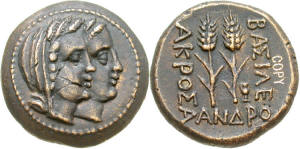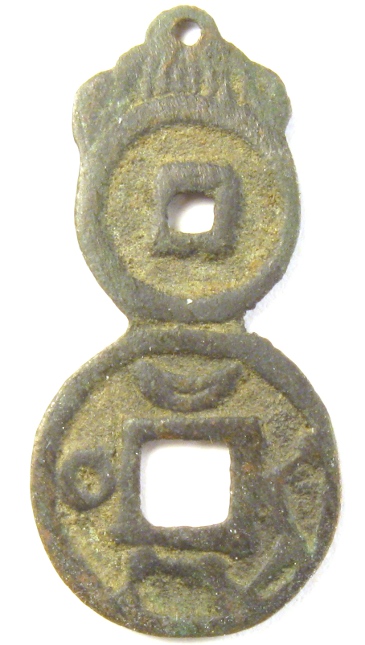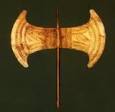It looks like you're using an Ad Blocker.
Please white-list or disable AboveTopSecret.com in your ad-blocking tool.
Thank you.
Some features of ATS will be disabled while you continue to use an ad-blocker.
share:
a reply to: Gordi The Drummer
Ocht, there's hunners by me.....woah! I see what you did there!
Why do I always miss the bleepy obvious? Auch as a prefix, I didn't even see that. It's the same as 'ach', I think, which means field.
Let me just check my Scythian vocabulary list (yes, I have found one, for bonus nerd points)...
Ocht, there's hunners by me.....woah! I see what you did there!
Why do I always miss the bleepy obvious? Auch as a prefix, I didn't even see that. It's the same as 'ach', I think, which means field.
Let me just check my Scythian vocabulary list (yes, I have found one, for bonus nerd points)...
originally posted by: beansidhe
a reply to: Gordi The Drummer
Ocht, there's hunners by me.....woah! I see what you did there!
Why do I always miss the bleepy obvious? Auch as a prefix, I didn't even see that. It's the same as 'ach', I think, which means field.
Let me just check my Scythian vocabulary list (yes, I have found one, for bonus nerd points)...
Because you operate on a "higher plane"!
It takes knuckle draggers like me to spot the obvious ones!
Ocht Aye!
a reply to: Gordi The Drummer
Scythian vocab list is proving tricky, if I'm honest lol!
But look..
Scythians
Like the Maetae tribe of Picts whom Septimus Severus had to pay for peace?
Scythian vocab list is proving tricky, if I'm honest lol!
But look..
Strabo (c. 63 BCE - 24 CE) reports that King Ateas united under his power the Scythian tribes living between the Maeotian marshes and the Danube. His westward expansion brought him in conflict with Philip II of Macedon (reigned 359 to 336 BCE), who took military action against the Scythians in 339 BCE. Ateas died in battle and his empire disintegrated. In the aftermath of this defeat, the Celts seem to have displaced the Scythians from the Balkans, while in south Russia a kindred tribe, the Sarmatians, gradually overwhelmed them.
Scythians
Like the Maetae tribe of Picts whom Septimus Severus had to pay for peace?
originally posted by: urbanghost
originally posted by: beansidhe
a reply to: urbanghost
A Scythian griffon or a Thracian dragon? Ok, I'll admit it could also be a Scythian griffon. Either way, it seems like another thing that was brought along for the ride.
The dragonesque brooch you show there (as they like to call them) seems to have developed from the beastie, or so I've read.
The dragonesque figure from celtic art dates to the 1st or 2nd century, pictish beasties come from around the 7th century. The celtic is much older and the pictish is thought to have come from the celtic. The pictish beastie is thought to be a sea monster or a dolphin.
I like splitting hair but when we have other accompanying iconography like wheat heads, raised arm ect it looks like not being able to see the forest for the trees on this dragon/griffin thing.
In the event that we want to keep the discussion to a strict comparison we still have griffins on brit coins.


And Trace/Greece
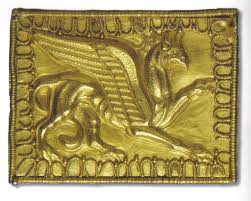



And Trace/Greece


a reply to: beansidhe
What is that made of? China does seem to pop up here and there.
Did you see were a few years back they found a graveyard along the silk road with mummies wearing plaid.
More
Celts in China
What is that made of? China does seem to pop up here and there.
Did you see were a few years back they found a graveyard along the silk road with mummies wearing plaid.
More
Solid as a warrior of the Caledonii tribe, the man's hair is reddish brown flecked with grey, framing high cheekbones, a long nose, full lips and a ginger beard. When he lived three thousand years ago, he stood six feet tall, and was buried wearing a red twill tunic and tartan leggings. He looks like a Bronze Age European. In fact, he's every inch a Celt. Even his DNA says so.
Based on the mummy, the museum has reconstructed what Cherchen Man would have looked like and how he lived. The similarities to the traditional Bronze Age Celts are uncanny, and analysis has shown that the weave of the cloth is the same as that of those found on the bodies of salt miners in Austria from 1300BC.
The Loulan Beauty's features are Nordic. She was 45 when she died, and was buried with a basket of food for the next life, including domesticated wheat, combs and a feather.
Best preserved of all the corpses is Yingpan Man, known as the Handsome Man, a 2,000-year-old Caucasian mummy discovered in 1995. He had a gold foil death mask - a Greek tradition - covering his blond, bearded face, and wore elaborate golden embroidered red and maroon wool garments with images of fighting Greeks or Romans.
Celts in China
a reply to: Logarock
I do remember that, there was a baby with a blue bonnet that sticks in my mind.
I don't know yet what these things are made of, but I'm going to find out and also find out some more about them - see if they turn up in other places too. They look like the sort of trinket you could carry around with you, a good luck charm. The Silk Road is something I find intriguing.
The Loulan Beauty was well named:
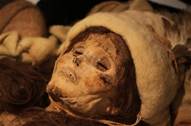
I do remember that, there was a baby with a blue bonnet that sticks in my mind.
I don't know yet what these things are made of, but I'm going to find out and also find out some more about them - see if they turn up in other places too. They look like the sort of trinket you could carry around with you, a good luck charm. The Silk Road is something I find intriguing.
The Loulan Beauty was well named:

a reply to: Logarock
James Hetfield must be a Celt. It was written for them:
James Hetfield must be a Celt. It was written for them:
...and the road becomes my bride
I have stripped of all but pride
So in her I do confide
And she keeps me satisfied
Gives me all I need
...and with dust in throat I crave
Only knowledge will I save
To the game you stay a slave
Rover wanderer
Nomad vagabond
Call me what you will
But I'll take my time anywhere
Free to speak my mind anywhere
And I'll redefine anywhere
Anywhere I may roam
Where I lay my head is home
...and the earth becomes my throne
I adapt to the unknown
Under wandering stars I've grown
By myself but not alone
I ask no one
...and my ties are severed clean
The less I have the more I gain
Off the beaten path I reign
Rover wanderer
Nomad vagabond
Call me what you will
But I'll take my time anywhere
I'm free to speak my mind anywhere
And I'll never mind anywhere
Anywhere I may roam
Where I lay my head is home
But i'll take my time anywhere
Free to speak my mind
And I'll take my find anywhere
Anywhere I may roam
Where I lay my head is home
Carved upon my stone
My body lie, but still I roam
Wherever I may roam
Here we go:
Gourd charms
Wu Lou’s can be seen associated with Sau, the God of Longevity. Sau often either holds a Wu Lou or has them drawn on his long robes. Lee Tie Guai is one of the Eight Immortals (eight superior beings representing the various characteristics of good fortune) who is often associated with the Wu Lou as well.
This gourd-shaped amulet is said to have originated in Ancient China where real gourds were hollowed out and dried, then filled with a liquid that ensured longevity and even immortality. They were also used on long travels so that hydration was retained and preserved. This is presumably how they became widely known as a health cure.
Gourd charms
This is a really good article about the similarities between Scandinavian and Chinese culture, particularly in references to dragons.
Elements of Indo-European culture in China

And here the same author considers the similarities between heraldry and construction:
Heraldry and Construction

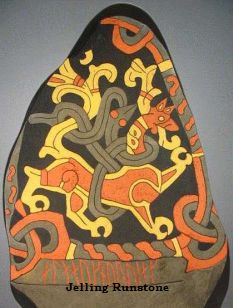
Coincidence?
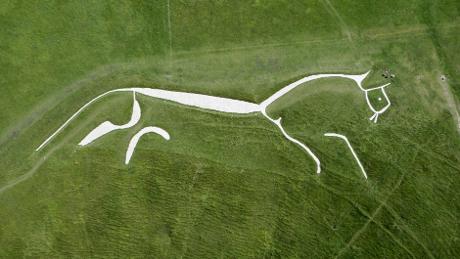
White horse hill
Elements of Indo-European culture in China

And here the same author considers the similarities between heraldry and construction:
Heraldry and Construction


In ancient time the Chinese knew that the Roman Empire existed. They called it "Da Qin", this means "Great Qin". So they must have thought, that there was a connection between The Qin people and the peoples of the West.
It is known from Qins own history, that some early Qin rulers worshipped the "Great White Ruler - God of the West", as the peoples on the plains in the West did it. This god called for horse sacrifices, preferably white horses...
Fire and the color red came to symbolize the Han dynasty. The same colors symbolized in the past the Zhou Dynasty. It is somewhat interesting that the banner color of modern China also is red.
Qins banner color was black, as also the Danes and Aesir's flag, the "Raven banner" was. ("Three Kingdoms" in the notes page 545)
The "Great White ruler in the West" might have been Odin the All-Father.
Coincidence?

The internationally-renowned Bronze-Age Uffington White Horse can be seen for miles away leaping across the head of a dramatic dry valley in the Ridgeway escarpment.
The horse is only part of the unique complex of ancient remains that are found at White Horse Hill and beyond, spreading out across the high chalk downland.
The Manger, a dramatic dry valley has steep rippled sides left from the retreating permafrost during the last Ice Age. These ripples are known as the Giant's Steps.
To the east of the Manger lies Dragon Hill, a small roundish hill with a flattened top. It is said to be the site where St. George, England's patron saint, slew the dragon. The blood poisoned the ground and left a white chalk scar for all to see.
White horse hill
originally posted by: beansidhe
Coincidence?
Certainly not.
It's the Cosmic Butterfly Effect apparently.
However I do see you are catching up now with this China talk, perhaps I'll need to Scry more since I see you have some strange synchronicity going on in relation to what I wrote weeks ago.
The double crescent axe was symbolic of the feminine/Goddess and associated with bull sacrifice?
That is interesting
Haha that's nothin. Time to blow your mind away!
It's a Butterfly! Remember?? Ascia monuste the "Great Southern White" butterfly translates in Latin:
"Ascia Monus te" "I Warned You with an Ax"
Which the 6 points of the butterfly ax are what? The Hexagram-Sexagram-Hexagon-Honeycomb!
The Star of 'Divide and Combine' = The Divine Comb of Ommm!
Go back to the Human body = 4 appendages and the middle is the "Torso" like the "Toro" *Spanish for Bull which is the what? The Minotaur which is the Middle Man of the Labyrinth of the Toro-Torso?
It's all a bunch of 'Bull' isn't it!?
I just "Tore" you "Anu One".
*Honey Combines Hone and Ney - which leads to Whetstone
Hoarstones
Hoarstone? Ore Stone? Hears Tone?
There are holes drilled in some of the stones, but these date from a much later period, when local miners would use the stones during wedding celebrations by filling the holes with gunpowder and setting it off.[2]
So we have mining and wedding themes, but I started by mining the word Honey and breaking it into two words, which is funny because we have a 'Honey Moon' after the 'Wedding Celebration', and the Moon is a rock, and we mine for rocks.
Wheatstone bridge
Ney = Nay = "Blur" (Hidden connotation is "No" = Nay-Say)
What does the Ney Say today? It's a Flute and it's really old!
The ney has been played continuously for 4,500–5,000 years, making it one of the oldest musical instruments still in use.
Giant Cane / Arundo donax
And back to the Hidden Comb symbolism!
In Romanian, the word nai[2] is also applied to a curved Pan flute.
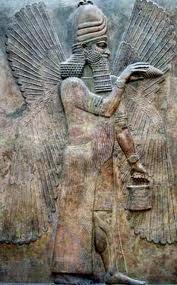
Cosmic Butterfly I'd say.
If we add legs and arms that's 10.
Say 10 (Ten)
Say Tan (it's the color of sand)
Say Tin (silver -10- binary)
*It's the Secret of Satan and Satin*
Satin and Milky Silk? Hmmm...
Silk Moth
*Moth-Month-Mouth*
Oh yeah and Qin?
That's like the Keen Ken of our Kin.
And it's 'Qian'.
Ch'in? It's the Chin of Shin's Teeth (shin-sin-sheen = teeth/sharp/press).
The Phoenician letter gave rise to the Greek Sigma (Σ) (which in turn gave Latin S and Cyrillic С), and the letter Sha in the Glagolitic and Cyrillic scripts (Ⱎ, Ш).
It's "Sharp", is that the Tone we hear or the Whetstone's purpose of sharpening a blade?
Sharpening Stones
Side link worth reading every part - Stones of Scotland
Blowing Stone in UK
The stone is capable of producing a booming sound, when anyone with the required skill blows into one of the perforations in a particular way.
"Rock" to this Flute or "Hone" your Ney Play!
Blowingstone Hill is part of the scarp slope of the White Horse Hills,
White Horse Hills! Singing Stone!
Vale of White Horse again!
Lambourn Downs? Lambourn combines several words, Lamb Burn (in) Our Urn. Ashes fall down.
edit on 5/7/2014 by muzzleflash because: (no reason
given)
Sharpening Stone? I'm Sharp with the Sacred Tone from the Sacred Harp of the One 'T' inside'o'me.
T? That's a Key from the Qi you See?
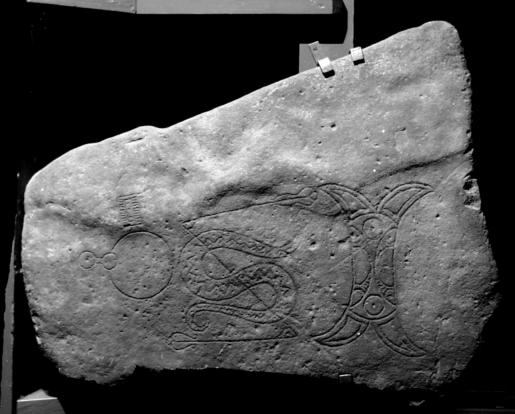
Isn't that neat? You found a stone that basically proved my Scrying worked with uncanny accuracy. Yay!
It actually showed I was right that Sigma-Snake-S is Equated with the Yew-Z symbol. *Which combined forms the Swastika aka the ZZ Top*
You gotta admit me posting the Hurley H2O double crescent, the double headed axe, along with Khonshu/Moonknight was incredibly accurate because I didn't even know this symbol would show up on any of these stones. I made those posts like a month ago or something...and didn't have a clue what it meant until you dug that stone up!!
A Spooky Miracle!
At this point I am asking "Is this Universe Real or is this Fake?"
Cuz I don't see how any of it's actually possible, unless it's all a Matrix!
Matrix = Ma's Tricks *Yew Silly Wabbits!*
-Trix suffix
So it is "Ma" and She is associated with ?
Tor again? This time as -tor suffix?
Agent? A Gent or an Agent of the Bull?
With "Bull Sight" you can see all this "Bull" and won't be fooled by Ma's Trix anymore!
That's the "Bull Fight", and you can call me Torero tonight.
Comb them lies out Senorita!
Matador? That's the mat of the door, cmon in I just opened Her up!
Welcome!
T? That's a Key from the Qi you See?

Isn't that neat? You found a stone that basically proved my Scrying worked with uncanny accuracy. Yay!
It actually showed I was right that Sigma-Snake-S is Equated with the Yew-Z symbol. *Which combined forms the Swastika aka the ZZ Top*
You gotta admit me posting the Hurley H2O double crescent, the double headed axe, along with Khonshu/Moonknight was incredibly accurate because I didn't even know this symbol would show up on any of these stones. I made those posts like a month ago or something...and didn't have a clue what it meant until you dug that stone up!!
A Spooky Miracle!
At this point I am asking "Is this Universe Real or is this Fake?"
Cuz I don't see how any of it's actually possible, unless it's all a Matrix!
Matrix = Ma's Tricks *Yew Silly Wabbits!*
-Trix suffix
: female that does or is associated with a (specified) thing
So it is "Ma" and She is associated with ?
Middle English, from Latin, feminine of -tor, suffix denoting an agent
Tor again? This time as -tor suffix?
Agent? A Gent or an Agent of the Bull?
With "Bull Sight" you can see all this "Bull" and won't be fooled by Ma's Trix anymore!
That's the "Bull Fight", and you can call me Torero tonight.
Comb them lies out Senorita!
Matador? That's the mat of the door, cmon in I just opened Her up!
Welcome!
a reply to: muzzleflash
Lol
en.m.wikipedia.org...'s_eye_level
With "Bull Sight" you can see all this "Bull" and won't be fooled by Ma's Trix anymore!
A bull's eye level is a type of spirit level that allows for the leveling of planes in two dimensions
Lol
en.m.wikipedia.org...'s_eye_level
new topics
-
This is adorable you guys!
General Chit Chat: 8 hours ago -
Reprehensible Behavior
US Political Madness: 9 hours ago -
Defending the need for adherence to Old Testament commandments under the new covenant of Christ
Conspiracies in Religions: 10 hours ago
top topics
-
Reprehensible Behavior
US Political Madness: 9 hours ago, 10 flags -
Those Drones over NJ and elsewhere
Aliens and UFOs: 14 hours ago, 8 flags -
South Korean coup was an attempt to start WW3
World War Three: 14 hours ago, 7 flags -
This is adorable you guys!
General Chit Chat: 8 hours ago, 7 flags -
Archer aviation and the NJ drones
Aircraft Projects: 14 hours ago, 5 flags -
Defending the need for adherence to Old Testament commandments under the new covenant of Christ
Conspiracies in Religions: 10 hours ago, 5 flags
active topics
-
George Stephanopoulos and ABC agree to pay $15 million to settle Trump defamation suit
Mainstream News • 24 • : WeMustCare -
Defending the need for adherence to Old Testament commandments under the new covenant of Christ
Conspiracies in Religions • 17 • : nugget1 -
-@TH3WH17ERABB17- -Q- ---TIME TO SHOW THE WORLD--- -Part- --44--
Dissecting Disinformation • 3709 • : WeMustCare -
Drones everywhere in New Jersey ---and Elsewhere Master Thread
Aliens and UFOs • 174 • : nugget1 -
The Mystery Drones and Government Lies --- Master Thread
Political Conspiracies • 106 • : cherokeetroy -
Statements of Intent from Incoming Trump Administration Members - 2025 to 2029.
2024 Elections • 45 • : WeMustCare -
Former DNI-Congressman John Ratcliffe says the U.S. Government is Intimidated by UFOs.
Aliens and UFOs • 42 • : anthelion -
Post A Funny (T&C Friendly) Pic Part IV: The LOL awakens!
General Chit Chat • 7912 • : imitator -
This is adorable you guys!
General Chit Chat • 4 • : CriticalStinker -
The Acronym Game .. Pt.4
General Chit Chat • 1016 • : FullHeathen

